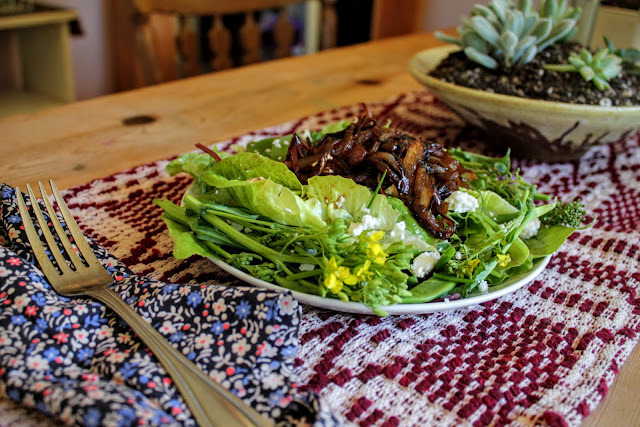I got the chance to cook with some European Extra Virgin Olive Oil recently, and it sure was a treat. I do love good olive oil. One summer as a teen I visited a large farmers market in San Franscisco. At the time, olive oil meant the virtually tasteless substance my mom cooked with. Wandering around the market, we stopped at a booth that sold olive oils from all around Europe. We got to sample them all and I couldn't believe all the flavor differences. This was not my mom's grocery store olive oil, some were fruity and nutty while others grassy and herbal. This led to an appreciation for good quality olive oil and the European Extra Virgin hits the mark.
So how do you find these products in the store? Because really, it doesn't much matter if you can't actually purchase them! You can also look for the European Union PDO certification (Protected Designation of Origin – also know as DOP in Italian) or PGI (Protected Geographical Indication – also known as IGP in Italian). PDO certified products must be produced, processed and prepared in a specific region using traditional production methods and have the sensorial qualities attributed to that region. PGI is less strict and certifies that one stage of the process occurred in a specific region. Third party authorities constantly monitor these certifications.
Look for the country or countries of origin on the label as well as best buy date and lot number. Some brands offer QR code technology so you trace the oil back to its source. Living in a very rural area I generally choose to purchase specialty things online. Use the same care and purchase from a trusted source.
A few tips for using quality olive oil--
- To ensure freshness, make sure you use it within 6 months
- Screw the cap on tight to protect against air.
- To ensure freshness, make sure you use it within 6 months
- Screw the cap on tight to protect against air.
- Store oil in a dark cool pantry away from heat and light, which causes decay. 57°F is the best temperature for storing and beware not to store your oil next to the stove (oops, I totally do this).
Did you know that-
-Extra Virgin Olive Oil (EVOO) is the freshly pressed juice of olives. It is cold pressed, meaning it is pressed without heat or chemicals.
- Acidity must be below 0.8% or virtually free of acidity. This has nothing to do with the pH or taste, but the % oleic acid (fatty acid). Higher levels indicate improper production and rancidity.
-Peroxide value must be below 20 millequivalents of oxygen/kilo of oil, which indicates the amount of oxidation or aging that’s occurred as a result of exposure to oxygen, light and heat.
- A panel of expert tasters trained by the International Oil Council test for taste defects and the presence of positive attributes of fruitiness, bitterness and spiciness. If the oil doesn’t have the signature fruity taste and harmonious balance it won’t pass as extra virgin.
I used the olive oil to make a caramelized balsamic salad dressing. My garden is full of all sorts of great salad ingredients right now, so I added little gem lettuce, spinach, orach, snap peas, broccolini, a little bit of dill and some feta cheese (although a more assertive blue would have been better). This dressing was really great. I loved that you cooked with the olive oil and then also added it in uncooked at the end. The salad felt like a special lunch and would be great for dinner too. Salad dressings are one area where I always try to use my good oil. You can really taste it! My kids enjoyed comparing the European olive oil with some cheaper stuff I had around. It was obvious even to them which one had great flavor.
The recipe I used--
I received this product for free from Moms Meet (momsmeet.com), May Media Group LLC, who received it directly from the manufacturer. As a Moms Meet blogger, I agree to use this product and post my honest opinion on my blog. The opinions posted are my own.






No comments:
Post a Comment